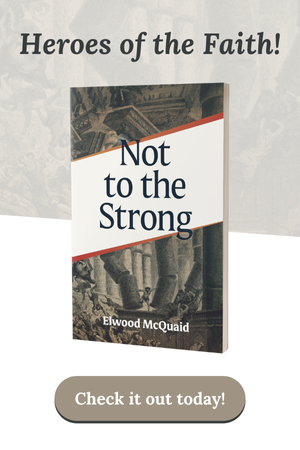The Quantum Shift Toward Paganism
The West is a magnet for gifted people —professionals who, for one reason or another, choose to reside where the deer and the antelope play. Although I don’t have statistics, it seemed like our town in 1991 had more than its share of the best, especially classically trained musicians. And they generously shared their talent in a wide variety of venues, including a pipe organ workshop that gave young keyboard students the opportunity to play instruments in churches throughout the community.
When my wife and young son returned from a workshop, I was prepared for a lengthy recitation on the splendor of pipe organs. Instead I heard a description of a church poster that read, “Love Your Mother” and bore a picture of “goddess Gaia” holding the world.
I don’t know how many people understood the message embedded in that poster back then, but today Christians are waking up to find their church’s ministry has been hijacked by a vocal movement promoting paganism.
Courting ‘Mother Nature’
Defining modern paganism is like trying to nail Jell-O to the wall. Pagans describe their worldview as pragmatic, self-reliant, experiential, ever-evolving, tolerant, and open-minded. Yet they have certain core principles, which writer Carl McColman loosely defined with the acrostic People Adoring Goddess And Nature.1
The term pagan literally means “country dweller” and originated when Christianity became the official state religion after the conversion of Roman Emperor Constantine in the fourth century. Whereas the cultural centers of the day were fashionably “Christian,” rural areas retained their polytheistic and animistic religious practices; and they became synonymous with the word pagan.
The stereotypical image most Christians have of paganism isn’t always accu-rate. Paganism views reality as a unified, all-encompassing whole; and “goddess” is essential to its belief system. Pagans see nature as having polarity of energy: dark and light, active and passive, male and female. As one practitioner explained, “Because we see nature as the divine, we also see our divine force as having two aspects—masculine and feminine—God and Goddess.”2 Sometimes explained as the yin and yang, god and goddess represent the complementary polar opposites of the unified whole.
Monism describes this worldview, in which all matter ultimately emerges from or reduces to the same substance or principle of being.3 Dualism, on the other hand, describes the Judeo-Christian worldview that recognizes God as distinct from His creation. Merlin Stone, author of When God Was a Woman, explained, “The Goddess is located within each individual and all things in nature.” The Judeo-Christian God, however, is transcendent.4
Pagans view the earth as a living, breathing organism that is the source of all life. Goddess Gaia, sometimes referred to as Mother Earth or Mother Nature, is often portrayed with Earth’s circle as her womb because she is considered responsible for bringing all life into existence. Since pagans venerate the earth, they see time spent outdoors as communion with goddess.
If you don’t think this information has relevance, think again. A monistic view of the cosmos is impacting the professing church via environmental concerns. Well-known and influential New York City clergyman James Parks Morton, an avid environmentalist, declared, “We are increasingly being called to realize that the body of Christ is the earth—the biosphere—the skin that includes all of us.” And Richard Austin, a former Presbyterian Church USA (PCUSA) pastor who addressed the EarthCare ’96 conference, declared, “Christ is fully God and fully Earth….He came to save the world….I hear the Bible calling us to redeem from destruction the Creation.”5
Anticipating ‘The Shift’
New Spirituality (formerly New Age) groups anticipate what they call “The Shift,” a quantum leap in planetary consciousness in 2012 that will result in a unified planet functioning in perfect harmony. Unfortunately, many popular Christian leaders visualize the same thing.
On the secular side, José Arguelles, instigator of the “Harmonic Convergence” peace initiative in 1987, wrote, “It is time for all who are willing to unconditionally embrace the new to become conscious players in the same myth…all we need is one unifying global event—an artistic whole—that unites and synchronizes us in affirmation of our highest dreams.”6 The Shift, he said, “will set the stage for a sequence in our evolution as distinct from the cycle of history as the rise of urban life was distinct from living in caves.”7
Participation in this supposed quantum leap requires all humanity to be on the same page spiritually, and the key to that alignment is the concept of “myth.” The diverse beliefs within paganism are transmitted through myth rather than doctrinal declaration. Pagans use a narrative approach that teaches through storytelling. It is not necessary to believe the stories as literal truth, but only as a metaphorical presentation of subjective truth. If the “myths” of the world’s religions can be synchronized, universal myth will bind all religions together.
Interestingly, popular Christian leaders also envision a radical shift in professing Christianity, claiming the faith requires a time of “transition, rethinking, re-imagining and re-envisioning.” An organization called Deep Shift claims to provide “support as leaders walk through their own personal transitions and guide their organizations through the transition and transformation necessary to engage their people in working for the good of the world in our culture today.”8
Michael Dowd, ordained United Church of Christ minister and author of Thank God for Evolution, declared, “We are on the verge of the greatest spiritual awakening in history. . . . It is quite possible that our own paradigm shift—from seeing nature as an artifact, to seeing Nature [sic] as the primary revelation of divinity (and inseparable from that divinity)—will prevail over the course of decades rather than centuries.”9
In fact, Dowd and others like him suggest putting an “evolutionary gloss” on aspects of the book of Genesis to “universalize that story, making it meaningful and instructive not just for Peoples of the Book, but also for peoples of other traditions and of no religious tradition.”10
Coining a new term to replace myth, well-known emergent church leader Brian McLaren, in his book Everything Must Change, claims Christianity’s “framing story” desperately needs a radical overhaul.11 Falling for the postmodern tale that truth is dynamic and ever-changing in order to stay relevant, these leaders view doctrine as unnecessary. Another Christian leader stated, “We desire growth and learning, not dogma and doctrine.”12 McLaren declared,
With no apologies to Martin Luther, John Calvin, or modern evangelicalism, Jesus (in Luke 16:19) does not prescribe hell to those who refuse to accept the message of justification by grace through faith….Rather, hell—literal or figurative—is for the rich and comfortable who proceed on their way without concern for their poor neighbor day after day.13
Deconstructing the biblical doctrine of salvation using an isolated portion of text is not unusual for these people. According to McLaren, “The core message of Jesus focused on personal, social, and global transformation in this life” and apparently has little to do with salvation through faith in the personal offering of Christ as the only sacrifice God will accept for sin.14 Shockingly, another Christian writer declared, “The Church’s fixation on the death of Jesus as the universal saving act must end, and the place of the cross must be reimagined in Christian faith. Why? Because of the cult of suffering and the vindictive God behind it.”15
Using double entendre and deliberately vague language, many advocate a hidden form of pluralism that is typical of paganism. Reflecting this attitude are people who refer to Christianity as “following God in the way of Jesus.”16 The subtle message is that all religions point people to God; Christianity just happens to be the “Jesus way.” They explain:
Evangelism or mission for me is no longer about persuading people to believe what I believe, no matter how edgy or creative I get. It is more about shared experiences and encounters. It is about walking the journey of life and faith together, each distinct to his or her own tradition and culture but with the possibility of encountering God and truth from one another.17
Another confesses, “For me the beginning of sharing my faith with people began with throwing out Christianity and embracing Christian spirituality, a nonpolitical mysterious system that can be experienced but not explained.”18 Sharing a faith you can’t explain seems oxymoronic; but the idea certainly fits within a philosophy where individualism, experience, and pluralism define the tenets of one’s beliefs.
The carefully worded, subtle message is that people can come to God any way they choose. To quote Michael Dowd, “If you are wholeheartedly committed to growing in deep integrity and have no resentments, no guilt, no shame, no regrets, and no unfinished business, you are saved no matter what your religion or philosophy.”19
Although the current move toward paganism within professing Christianity emerged through mainline denominations, there are voices within these groups who recognize the implications. Sylvia Dooling of the PCUSA warned that these beliefs are growing within the mainstream of mainline denominations.20 Diane L. Knippers, late president of the Institute on Religion and Democracy, lamented, “The movement remains influential in the mainline denominations as the vanguard of feminist theology, the most prominent trend on seminary campuses today.”21
They and others like them understand that if the professing church allows a pagan worldview to “re-imagine” the core elements of Christianity, it will certainly mean a deep shift not only for the church, but for the world.
ENDNOTES
- Carl McColman, The Complete Idiot’s Guide to Paganism (New York, NY: Penguin, 2002), 6.
- “Paganism as a Belief System,” Harmonious Living, 28, 2006 <harmoniousliving.co.za/Spirituality/Beliefs/Paganism-as-a-Belief-System>.
- “Monism” <thefreedictionary.com/monism>.
- Richard N. Ostling, Michael P. Harris, Elizabeth L’Hommedieu, “When God Was a Woman,” Time, May 6, 1991 <time.com/time/magazine/article/ 0,9171,972894-2,00.html>.
- Dave Hunt, “The Greening of the Cross,” The Berean Call, June 30, 1997 <thebereancall.org/node/5820>.
- José A. Arguelles, “Welcome to the New Time” <lawoftime.org/home.html>.
- José A. Arguelles, “Planetary Whole System Design Science: A Contribution to WorldShift 2012” <lawoftime.org/planetarywholesystem.html>.
- “We Are in Deep Shift” <deepshift.org/site>.
- Michael Dowd, Thank God for Evolution (New York, NY: Penguin, 2007), 128.
- Ibid., 166.
- Brian McLaren, Everything Must Change (Nashville, TN: Thomas Nelson, 2007), 66–68.
- John O’Keefe, “Church 3.0, the Upgrade” <next-wave.org/nov01/church30.htm>.
- McLaren, 208.
- Ibid., 22.
- Alan Jones, Reimagining Christianity, cited in Don Boys, “Emergent Church Leaders Are Modern Gnostics!” <cstnews.com/bm/issues-facing-christians-today-common-sense-for-today/falling-standards-and-seeker-sensitive-churches/emergent-church-leaders-are-modern-gnostics.shtml>.
- McLaren, 12.
- Eddie Gibbs and Ryan K. Bolger, Emerging Churches: Creating Christian Community in Postmodern Cultures (Grand Rapids, MI: Baker Academic, 2005), 131.
- Donald Miller, Blue Like Jazz (Nashville, TN: Thomas Nelson, 2003), 115.
- Dowd, 197.
- Christopher Lensch, “’Re-Imagining’ Review: Radical Feminism in Sheep’s Clothing,” WRS (Western Reformed Seminary) Journal (10), no. 1, (2003) <wrs.edu/Materials_for_Web_Site/Journals/10-1%20Feb-2003/Lensch%20-%20Re-imagining%20Update.pdf>.
- Cited in Lensch.







